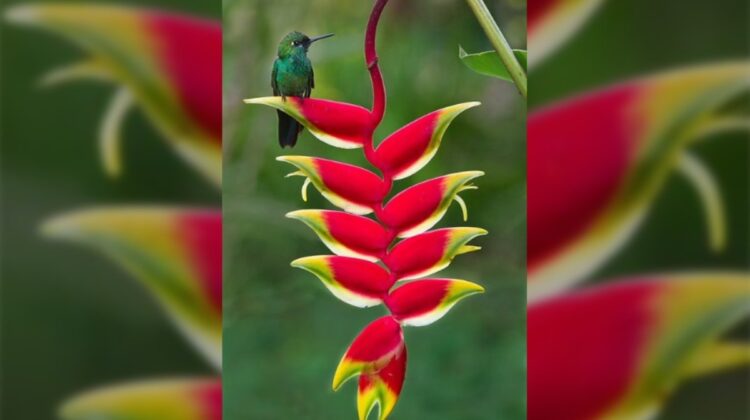
Heliconia rostrata, commonly known as the hanging lobster claw or false bird of paradise, is an extraordinary herbaceous perennial plant that captivates with its unique and enchanting downward-facing flowers. This tropical beauty is a member of the Heliconiaceae family and is native to the lush rainforests of Central and South America.
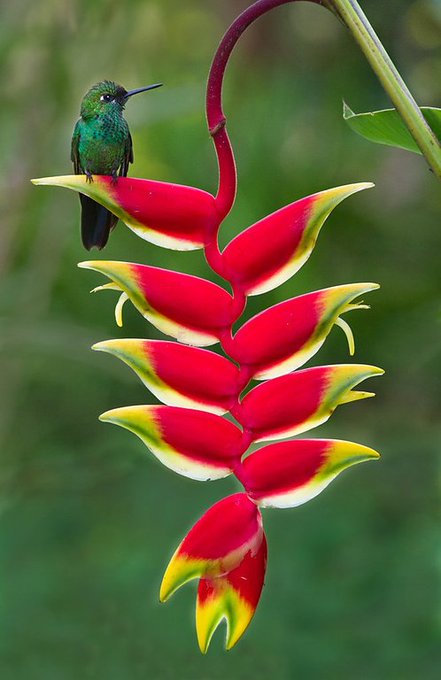
With its stunning and flamboyant appearance, Heliconia rostrata stands out among other plants. The plant typically grows up to 15 feet tall, boasting a striking combination of vibrant colors and dramatic form. Its elongated, paddle-shaped leaves are a rich shade of deep green, providing a perfect backdrop for the mesmerizing flowers that steal the show.

The true allure of Heliconia rostrata lies in its extraordinary inflorescence. The hanging lobster claw derives its common name from the distinct shape of its flowers, which closely resemble the pincers of a lobster. These inflorescences emerge from tall, erect stalks known as peduncles, gracefully arching downwards to showcase their intricate details.
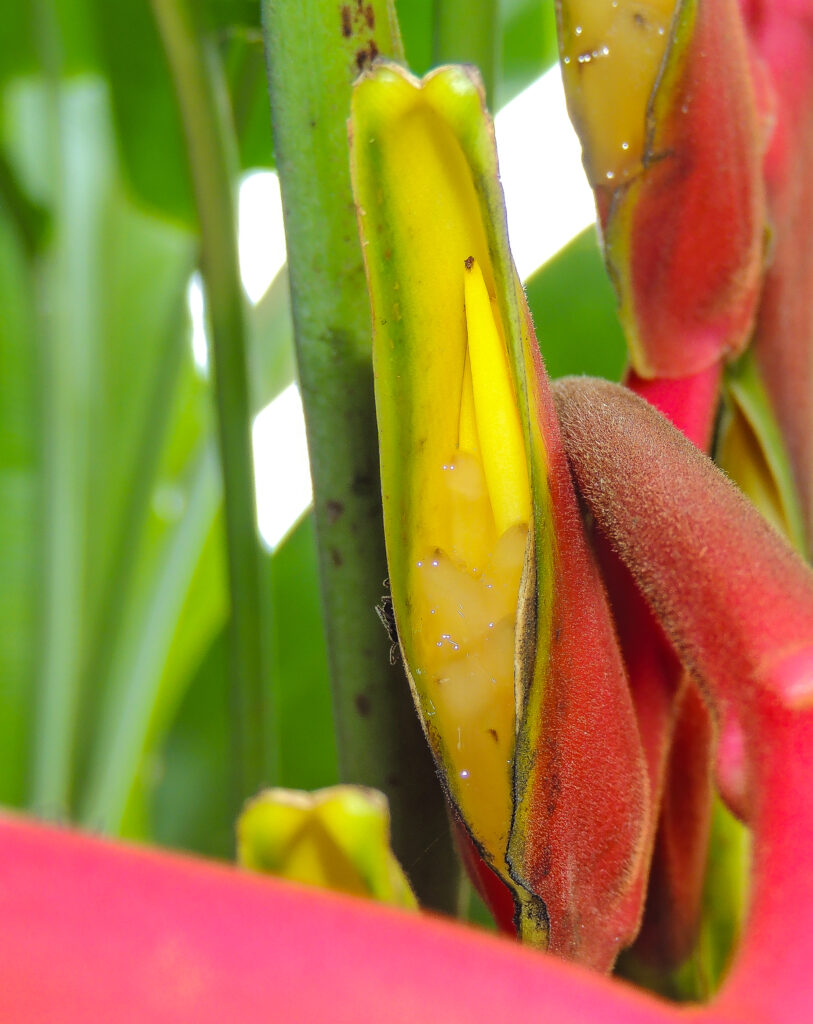
The flowers of Heliconia rostrata exhibit a vivid and vibrant palette, consisting of shades such as radiant reds, fiery oranges, and bold yellows. These hues are further accentuated by contrasting splashes of deep purple or green, creating a visually stunning spectacle. The striking coloration serves to attract pollinators, mainly hummingbirds and butterflies, which play a crucial role in the plant’s reproductive cycle.
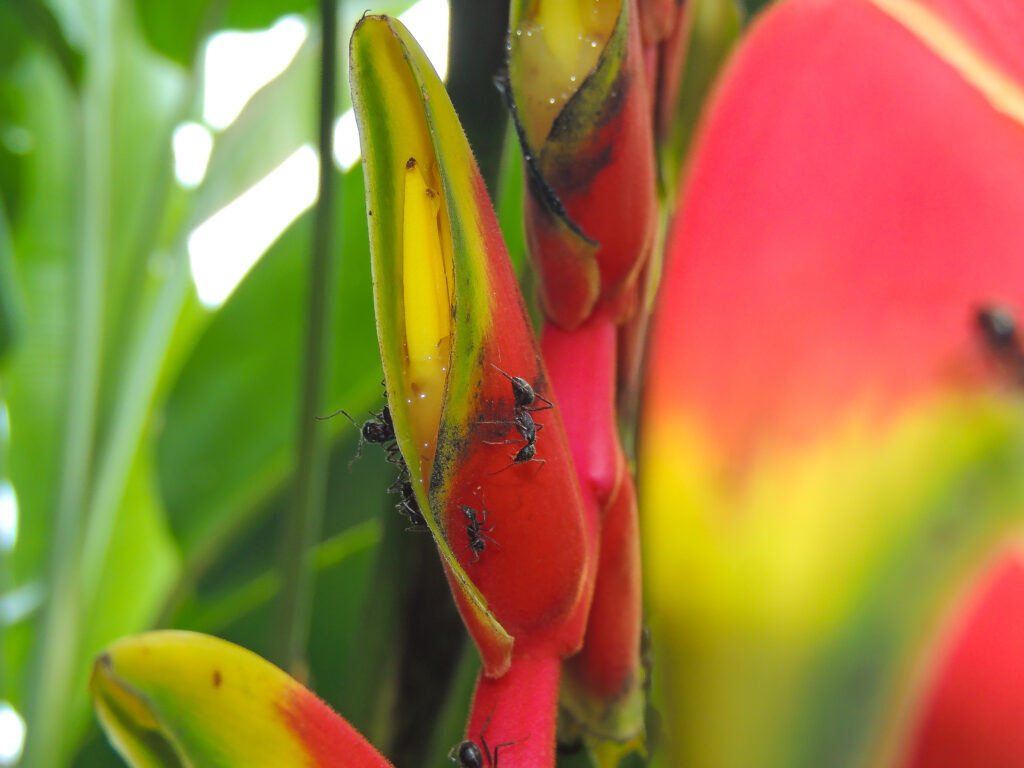
Each inflorescence of Heliconia rostrata is composed of a series of bracts, which are modified leaves that surround the true flowers. The bracts form a protective sheath around the delicate flowers, ensuring their safety while enhancing their visual appeal. These modified leaves come in various shapes and sizes, some resembling lobster claws with their curved tips, while others mimic the plumage of tropical birds, giving rise to the plant’s alternative name, false bird of paradise.
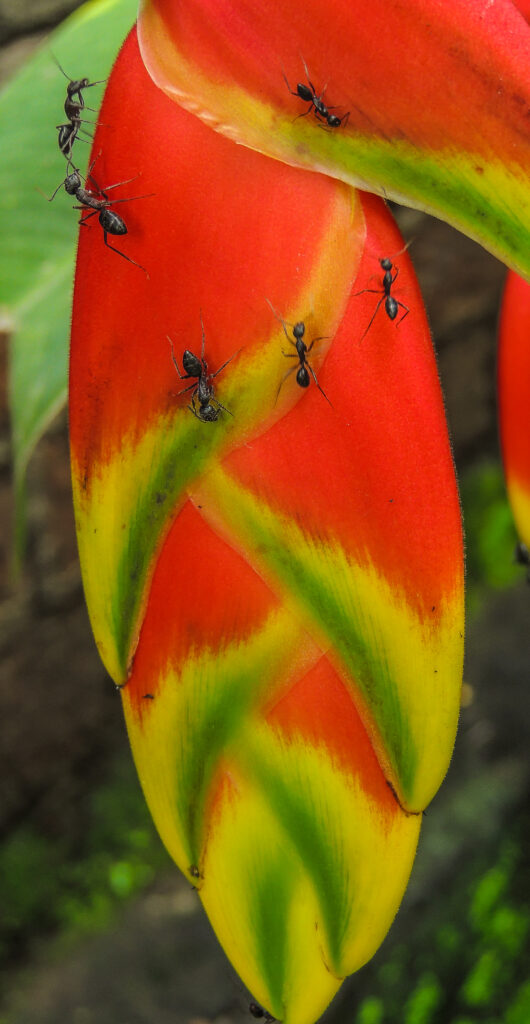
As the flowers of Heliconia rostrata mature, they undergo fascinating transformations. Initially, they appear as small, green buds nestled within the bracts, gradually developing and elongating until they reach their full splendor. The individual flowers within the inflorescence emerge sequentially, opening in succession over a period of time, thereby prolonging the plant’s vibrant display.
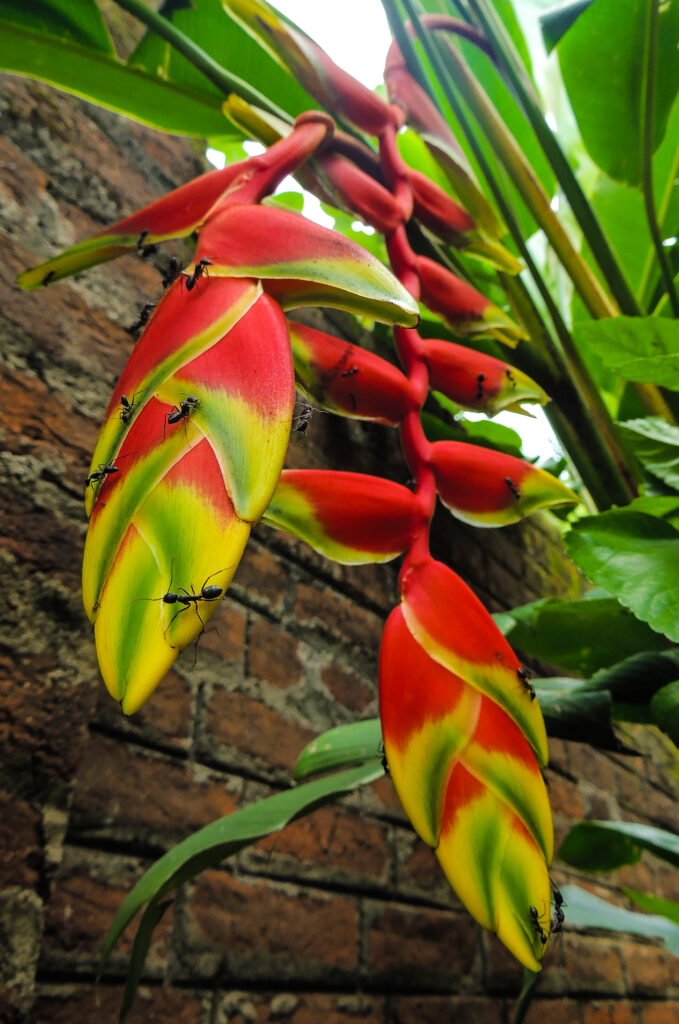
Aside from its aesthetic value, Heliconia rostrata also plays a vital ecological role in its native habitat. The plant provides a source of nectar for hummingbirds and other nectar-feeding animals, contributing to the overall biodiversity of the rainforest ecosystem. Additionally, the sturdy stems of Heliconia rostrata offer shelter and nesting sites for small creatures like frogs and insects.
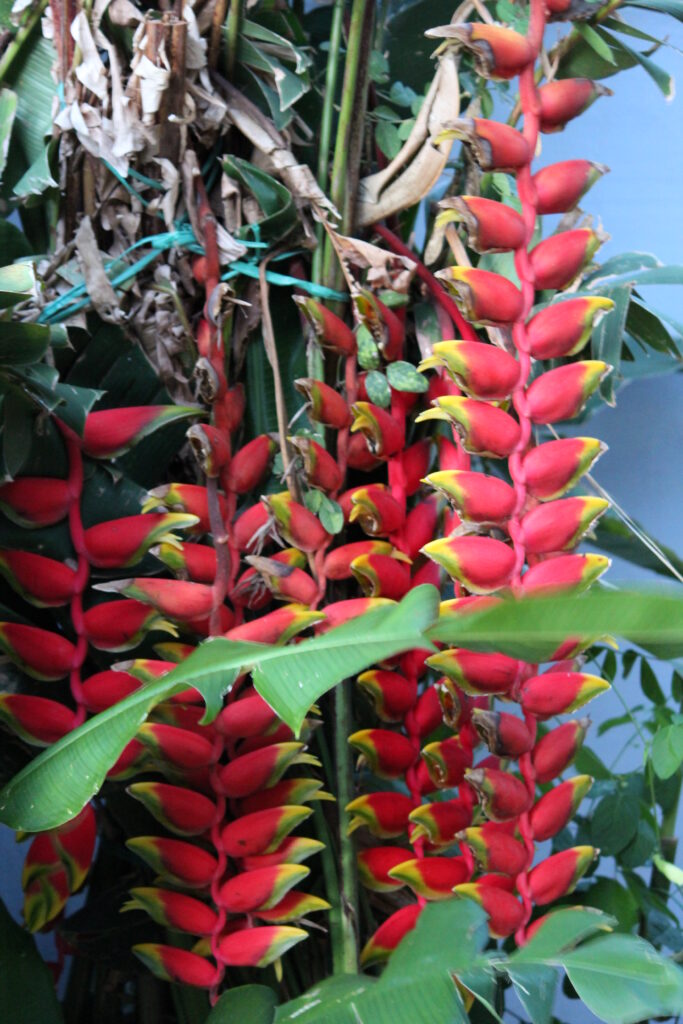
Cultivating Heliconia rostrata requires a warm and tropical climate, mimicking its natural habitat. The plant thrives in moist, well-drained soil and prefers partial shade to protect its delicate flowers from excessive sun exposure. Regular watering is essential to keep the soil consistently moist, replicating the conditions of its native rainforest environment.

In conclusion, Heliconia rostrata, also known as the hanging lobster claw or false bird of paradise, is an extraordinary herbaceous perennial plant that showcases a captivating display of downward-facing flowers. With its vibrant colors, intricate form, and unique resemblance to lobsters and tropical birds, this tropical beauty stands out as a remarkable addition to any garden or botanical collection. Whether admired for its aesthetic charm or appreciated for its ecological contributions, Heliconia rostrata remains an enchanting symbol of the lush rainforests from which it originates.

Leave a Reply